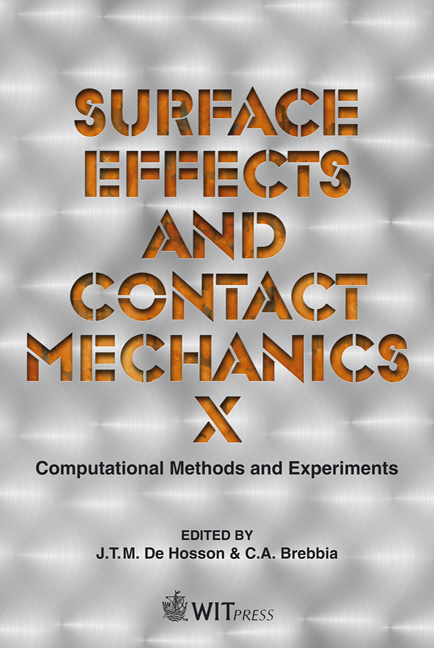Evaluation Of Residual Stresses In Laser Clad Coating At The Micrometer Scale
Price
Free (open access)
Transaction
Volume
71
Pages
10
Page Range
277 - 286
Published
2011
Size
5,173 kb
Paper DOI
10.2495/SECM110241
Copyright
WIT Press
Author(s)
I. Furár, V. Ocelík & J. Th. M. De Hosson
Abstract
Residual stresses may have beneficial or detrimental effects to the materials properties and therefore precise knowledge and control of residual stresses are of high practical relevance. For the stress-relaxation measurement at a micro level we explored the slit milling (crack compliance) method using Focused Ion Beam (FIB) to release local strain induced by internal stresses and Digital Image Correlation (DIC) of SEM images taken before and after stress release to register it. The method allows us to measure stress components through the entire area of laser clad coating as a function of laser clad depth. We used: (i) 3.3 kW IPG fiber laser for cladding of tool steel, (ii) LYRA Tescan dual beam system with Focused Ion Beam and Electron Beam guns like milling-imaging instrument, respectively, (iii) Aramis GOM GmbH Digital Image Correlation for surface displacements registration. Finally, reducing the noise by using the appropriate magnification, facets size, resolution and by applying of integration method during collecting of SEM images we were able to increase sensitivity for lowest detectable displacement (~ 1nm). Keywords: residual stress, focus Ion beam, laser clad coating, digital image correlation. 1 Introduction Laser cladding is an important component of surface processing technology. Due to the small melting pool, large temperature gradient, narrow bonding zone and high thermal stress, cracks can be easily nucleated, especially in thick metallic coatings [1, 2]. To prevent cracking is one of the most important issues from the preparation and industrial points of view [3–5]. Therefore an evaluation of
Keywords
residual stress, focus Ion beam, laser clad coating, digital image correlation





